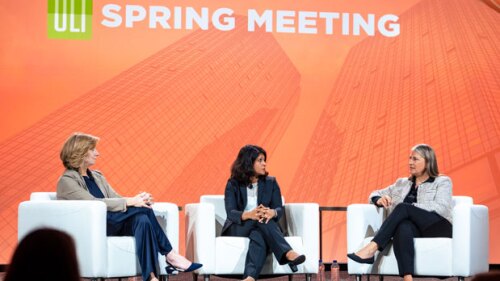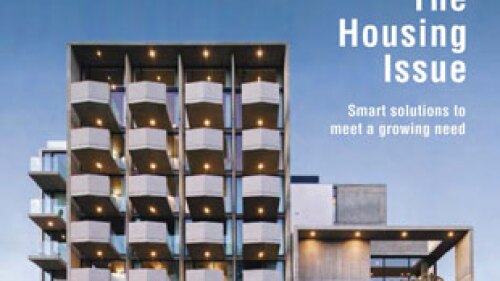In a fast-paced and dynamic closing keynote speech at the ULI Spring Council Forum, Michael Crow, president of Arizona State University (ASU), gave a personal account of the ongoing transformation of his university and its Phoenix urban region—the result of intensive partnerships between area public and private institutions.
Crow noted that “in the next 15 years, just 600 global cities are projected to account for 60 percent of all economic activity.” This will diminish the role of nation-states in establishing competitiveness, he suggests, and put the burden on cities to secure their own competitiveness. This is the challenge that has fueled ASU’s new role within the Phoenix region, he said.
Crow, ASU president since 2002, recounted a period of strong growth for the university—part of its transformation into an active and engaged partner of the city in enhancing competitiveness, rather than an isolated center of elite learning. He praised the model of the University of London, which replaced the cloistered models of Cambridge and Oxford with a more dispersed urban university.
Following this model, the university now has six campuses integrated with neighborhoods throughout the Phoenix area. But these campuses remain connected to each other, Crow noted, both physically and through advanced technology. Two of the campuses are connected by the new light-rail line, and a third will soon join them. Bus lines also connect the campuses, which are designed to be pedestrian- and bike-friendly.
The university has created a new Global Institute of Sustainability to champion mixed-use urban development as well as other aspects of sustainability. Its interdisciplinary School of Sustainability has already begun graduating students with bachelor’s, master’s and PhD degrees. The school’s students work on actual urban projects in the Phoenix region.
The university has committed that all buildings will be carbon-neutral—not so much because this is a worthy goal in its own right (though it is, Crow said), but because it serves an important education function. As Crow noted, “Universities use 3 percent of all electricity but have 100 percent of all students.” The West Campus, for example, will have a 3.3-megawatt (MW) solar electric system—part of an eventual 10-MW university system—generating excess capacity that will be sold back to the grid.
The university’s oldest and largest campus in Tempe—home to 55,000 students—is also undergoing a major expansion into surrounding urban areas, and partnering with neighbors to develop mixed-use facilities for students and nonstudents. The ambitious plans include over 5 million square feet (465,000 sq m) of mixed-use development over the next two decades.
Crow closed by giving his own frank assessment of the progress of Phoenix in creating a competitive 21st-century city. The city is adaptable, showing that it has learned to diversify and seize new opportunities. It has the necessary learning infrastructure, thanks to ASU and other institutions. However, the city is not doing as well on resilience and sustainability, he thinks; this is where greater urban sustainability can play a role.
What about a creative economy? Crow noted that this value must extend beyond a so-called creative class. Arizona’s income disparity is greater than at any time in its history, and this has profound consequences for a range of other costly issues. The creative class has done very well, but in effect, everyone else serves them—and this is not sustainable. We need to diversify this income, he said, by diversifying the creativity of the city.



